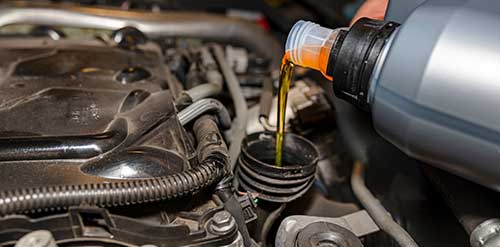Hyundai Motorstudio Senayan Park
Hyundai Motorstudio Senayan Park
Newsroom
-
9 Types of Car Oil and When to Change It
- Hyundai Motorstudio Senayan Park 2022.06.22
-
Changing the oil is a basic maintenance that must be done to maintain the engine. But with today's options, choosing the right types of car oil is not easy.
Oil is a lubricant that has an important role in the combustion cycle, which is to keep the engine cool while ensuring all components to move. Changing the oil regularly not only keeps the engine in top condition, it also helps to save money on engine servicing.
Choosing the wrong oil can lead to engine damage because each oil is basically made for a different task. That's why, it's important to know the types of car oil so you don't pick the wrong one.
Types of Car Oil
Not all oils are equal. Depending on the use, the characteristics and viscosity of each oil are different. These differences are clearly written on the packaging, so be sure to read the details on the label.
1. Engine Oil
The engine block consists of several parts with specific functions, one of which is a wheel drive component consisting of a crankshaft, piston, cylinder, and others. These components require lubricant to move.
When the car is started, the oil will move to coat each component to prevent friction. Some cars provide a dedicated indicator for oil pressure in the speedometer. Lack of oil makes the engine cranky because the components rub against each other.
As your reference, engine oil must be changed every six months or 5,000-10,000 km to keep the engine remaining in optimal performance.
Read More: 9 Benefits of Used Oil Lubricants, Here Are The List!
2. Transmission Oil
Besides the driving system, the car is equipped with a transmission system. To work optimally, the transmission system requires special oil. Transmission oil will ensure smooth gear shifts, but the type will differ for manual and automatic transmission systems.
The characteristics of the oil for manual transmission cars tend to be thicker, and only lubricate the gear and bearing components. To make the transmission system remain optimal, the oil should be changed every 10,000 km.
For cars with automatic transmissions, oil lubricates the clutch components and torque, and the oil should be changed every 20,000 km.
3. Gear Oil
Axle oil is needed to lubricate the axle ‘teeth’ to prevent direct contact between the axle teeth, or between the bearing components and the pinion gear. In order for the axle components to remain optimal, the axle oil should be changed every 10,000 km, or a maximum of 20,000 km. In general, the axle oil is often changed at the same time as the transmission oil.
4. Power Steering Oil
Handy steering system will make it easier for the car to maneuver. The current power steering system is more complex than the previous generation because it involves many different components.
Power steering oil plays a role in lubricating each component so the steering is handier to rotate. For added comfort, power steering oil should be updated every 40,000 km.
5. Transfer Oil
Not all cars require a transfer oil, only All-Wheel Drive (AWD) and Four-Wheel Drive (4WD) models use it. Its function is to lubricate the bearing and chain components.
Transfer oil is facilitating a gear rotation so the car feels smooth when running. To keep it working, the transfer oil should be changed every 40,000 km.
6. Brake Oil
The braking system has an important function to stop the vehicle. Losing this function is fatal. Often called a brake fluid, brake oil is useful for smoothing the braking system, especially for the hydraulic system.
Because of its function, brake fluid should be changed regularly. Brake fluid should be renewed every 30,000 km, or even better if it is changed when it starts to change color, thickness, or if it looks cloudy.
7. Synthetic Oil
Synthetic oil can be considered as the best types of car oil because it goes through several refining processes to the molecular stage. That's why synthetic oil is pricey but offers better performance.
Compared to other types, synthetic oils last longer and offer more mileage. Synthetic oil is designed with a different formula than traditional oil which offers better protection and performance, makes the engine cleaner, works better in low temperatures, and more efficient in fuel consumption.
8. Semi Synthetic Oil
This is a hybrid oil because it is produced from a combination of synthetic oil and mineral oil. Semi-synthetic oil offers the advantages of both types of car oil by eliminating the disadvantages.
As a result, semi-synthetic oils offer better performance and longer lifespan than conventional oils but are more affordable than synthetic oils. In general, semi-synthetic oils are suitable for those who want to save on costs while providing the ideal protection for the engine.
Read More: 8 Bad Consequences If You Skipping for Oil Change and Its Solutions
9. Conventional Oil
Often called mineral oil, conventional oil is produced from crude oil with a simple process to increase the viscosity. Among the advantages of conventional oils are they are more affordable and suitable for saving money while protecting the engine.
Conventional oil is also quite good because basically there is no bad oil on the market. The only drawback is the purification quality is low so it won’t protect the engine as well as synthetic oil.




